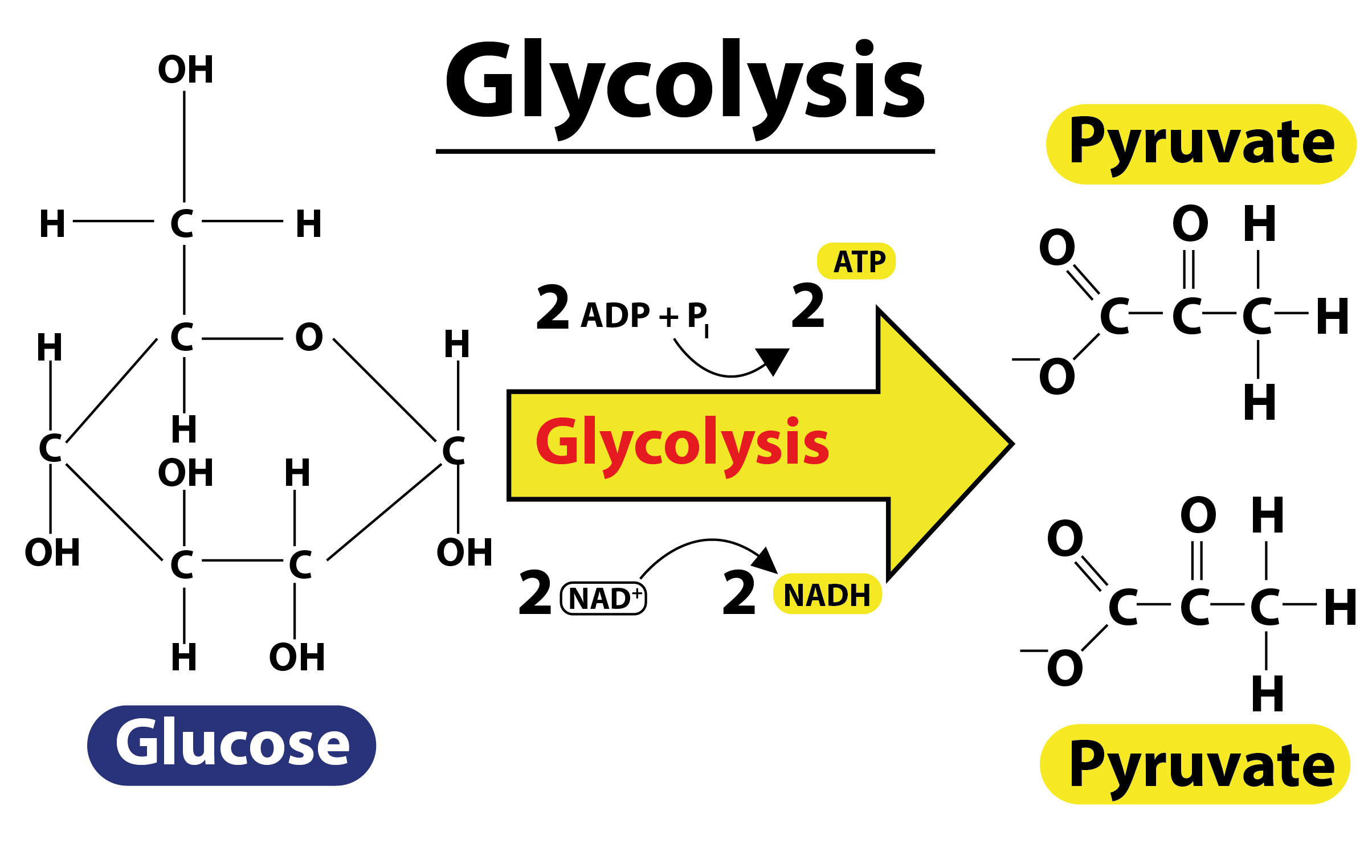
In glycolysis, during oxidation, electrons are removed by -
(a)ATP
(b)Glyceraldehyde-3-Phosphate
(c)${ NAD }^{ + }$
(d)Molecular oxygen
Answer
459.9k+ views
Hint: The process of glycolysis occurs in every living cell of the body. It occurs in ten enzyme-catalyzed reactions. During oxidizing reaction, an oxidizing agent accepts electrons and reduces itself in the step catalyzed by glyceraldehyde-3-phosphate dehydrogenase.
Complete answer:
- Glycolysis is the first step in respiration of living cells. It is the metabolic pathway that converts glucose to pyruvate through ten enzyme-catalyzed reactions.
- In the oxidation reaction, glyceraldehyde-3-phosphate is oxidized, resulting in the removal of a pair of electrons by ${ NAD }^{ + }$ and the addition of a phosphate group to form 1,3-diphosphoglyceric acid.
- ${ NAD }^{ + }$ is thus an oxidizing agent which reduces itself by accepting electrons and forming NADH.
- The reaction is given as ${ NAD }^{ + }\quad +\quad { P }_{ i }\quad \overset { Glyceraldehyde\quad 3-phosphate\quad dehydrogenase }{ \longrightarrow } \quad NADH\quad +\quad { H }^{ + }$. As denoted, the reaction is catalyzed by glyceraldehyde 3-phosphate dehydrogenase.
Additional Information:
- In glycolysis, one molecule of glucose produces four ATP, two NADH, and two pyruvate molecules.
- Although four ATP molecules are formed, two molecules of ATP are already used in the first half of glycolysis, thus the net gain is two ATP molecules.
- The two pyruvate molecules formed are further used in starting the Krebs/Citric acid cycle.

So, the correct answer is ‘${ NAD }^{ + }$’.
Note: - Red blood cells, or erythrocytes, are solely reliant on glycolysis as a source of energy because they do not have mitochondria.
- The enzymes involved in glycolysis are rate limiting steps and are needed in sufficient quantities for the reactions to continue.
Complete answer:
- Glycolysis is the first step in respiration of living cells. It is the metabolic pathway that converts glucose to pyruvate through ten enzyme-catalyzed reactions.
- In the oxidation reaction, glyceraldehyde-3-phosphate is oxidized, resulting in the removal of a pair of electrons by ${ NAD }^{ + }$ and the addition of a phosphate group to form 1,3-diphosphoglyceric acid.
- ${ NAD }^{ + }$ is thus an oxidizing agent which reduces itself by accepting electrons and forming NADH.
- The reaction is given as ${ NAD }^{ + }\quad +\quad { P }_{ i }\quad \overset { Glyceraldehyde\quad 3-phosphate\quad dehydrogenase }{ \longrightarrow } \quad NADH\quad +\quad { H }^{ + }$. As denoted, the reaction is catalyzed by glyceraldehyde 3-phosphate dehydrogenase.
Additional Information:
- In glycolysis, one molecule of glucose produces four ATP, two NADH, and two pyruvate molecules.
- Although four ATP molecules are formed, two molecules of ATP are already used in the first half of glycolysis, thus the net gain is two ATP molecules.
- The two pyruvate molecules formed are further used in starting the Krebs/Citric acid cycle.

So, the correct answer is ‘${ NAD }^{ + }$’.
Note: - Red blood cells, or erythrocytes, are solely reliant on glycolysis as a source of energy because they do not have mitochondria.
- The enzymes involved in glycolysis are rate limiting steps and are needed in sufficient quantities for the reactions to continue.
Recently Updated Pages
The correct geometry and hybridization for XeF4 are class 11 chemistry CBSE

Water softening by Clarks process uses ACalcium bicarbonate class 11 chemistry CBSE

With reference to graphite and diamond which of the class 11 chemistry CBSE

A certain household has consumed 250 units of energy class 11 physics CBSE

The lightest metal known is A beryllium B lithium C class 11 chemistry CBSE

What is the formula mass of the iodine molecule class 11 chemistry CBSE

Trending doubts
State the laws of reflection of light

Arrange Water ethanol and phenol in increasing order class 11 chemistry CBSE

One Metric ton is equal to kg A 10000 B 1000 C 100 class 11 physics CBSE

Difference Between Prokaryotic Cells and Eukaryotic Cells

A mixture of o nitrophenol and p nitrophenol can be class 11 chemistry CBSE

How do I convert ms to kmh Give an example class 11 physics CBSE




